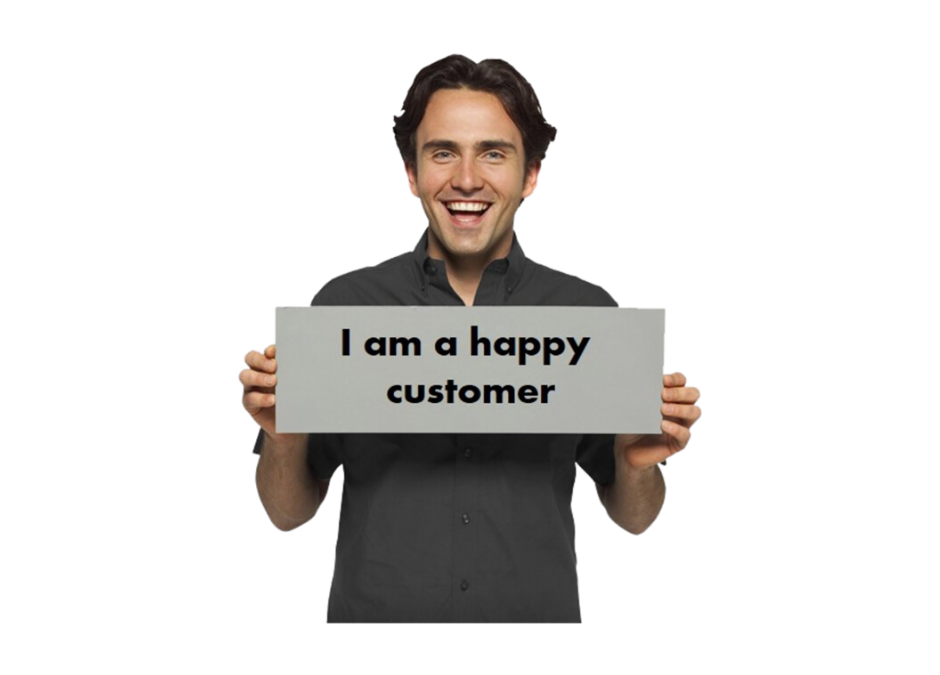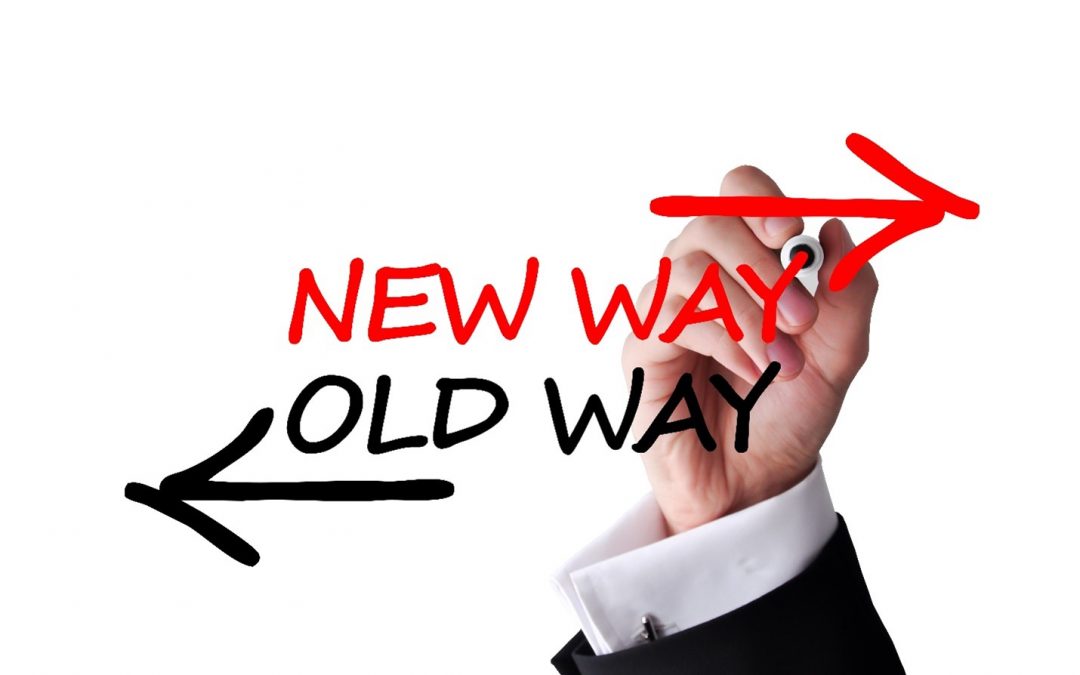
by Art Waskey | May 22, 2023 | Art of Sales Weekly, Featured
The best measure of performance is a satisfied customer. Today’s digital business practices enable swifter transactions. However, they can be a stumbling block when it comes to addressing customer concerns and satisfaction. For example, I recently tried to resolve an issue with my internet and TV provider and was connected to an automated digital agent. Following prompts, I typed in my problem only to receive a list of online tutorial solutions. I did not make any actual human contact during the session, and I ended up feeling frustrated as my problem remained unsolved. This begs the question, how can we better serve our customers in today’s business environment?
The Personal Touch
We all know that customer frustration is bad for business. The good news is that, as independent distributors, we have the ability to do business in a better way. While alternative channels have caused us to move more interactions online to remain competitive, we are still in touch with customers on a much more personal level than the big guys. This allows us to create better digital pathways targeted to our customers’ needs. Using our resources to optimize performance, we can answer questions better than an automated agent. We can provide the personal touch.
Increasing Shareholder Value
Protecting the integrity of your shareholders, from base-line employees to customers, is a great way to optimize performance. Everyone, from your warehouse worker to the chief executive, is in a position to help improve the efficiency of the company. This puts you in a position of great flexibility when it comes to problem-solving. With employees focused on operational excellence, you will realize increased revenue and bottom-line growth.
Service
Lastly, In today’s fast-paced business environment, the surest path to a satisfied customer base is made by providing the best service. Make excellence in serving your company’s priority.
Get tips and tricks like the above in The Art of Sales books. Or subscribe to the FREE monthly articles here

by Art Waskey | May 15, 2023 | Art of Sales Weekly, Featured
Happy employees create happy customers. Don’t let employee complaints reach your customers’ ears. Optimize employee performance by providing your team with the best resources.
The Right Technology
One of your most important performance-optimizing resources is your CRM. Meanwhile, make sure it is up-to-date. With the right digital tools your workforce can harvest data that allows them to do their job better. Be sure your team has useable analytics tailored to your customers’ needs. Remember, more data isn’t necessarily the right data.
Look at your tooling. How many clicks does it take to get the user to the right information? Make sure the accounts receivable department is getting to their sales counterparts in a timely manner. Also, you don’t want collection issues to mount up. The right ERP system removes the silos that so often slow down distribution.
Keep in mind that the upcoming generation of customers is used to quick order fulfillment. Today’s consumer expects Amazon-like results. Furthermore, people expect their B2B services to be as accessible as the B2C services they are accustomed to. Keep your eCommerce solutions current to optimize performance.
The Value Stream
Focus on your value stream for a happier customer base. Everyone in your company can influence your success in a positive way if they are equipped to do so. Additionally, ask your team members, “What is the most difficult part of your day?” Find out what would make their job easier then give them the tools they need. Happy employees can show you ways to produce optimized solutions.
Peak Performance
Aligning your technology with the needs of your shareholders is absolutely crucial for achieving peak performance. Offer something that the large verticals can’t match — a collaborative customer experience. Make sure your employees have the resources they need to provide excellent customer satisfaction. Happy employees make happy customers and a secure revenue base.
Get tips and tricks like the above in The Art of Sales books. Or subscribe to the FREE monthly articles here.

by Art Waskey | May 1, 2023 | Art of Sales Weekly, Featured
In the Digital Era
Traditional relationship skills as well as AI technology are necessary for successful selling in the digital age. The ability to identify customer needs has always been a requirement for sales representatives. Also, AI technology enables reps to do that quickly and efficiently by analyzing customers’ previous transactions and preferences. As a result, Combining AI data with traditional relationship-selling tools is a new way to win business and reps need help adjusting to this change.
Action Items
Furthermore, your sales team needs to have guidance navigating this new world of technology applications. A recent press release from Gartner recommends company Chief Sales Officers explore the following actions to successfully evolve a hybrid sales strategy:
- Bring together sales and marketing leaders to set a multichannel strategy for customer learning paths, including account-based campaigns and digital sales playbooks.
- Rethink the role of digital engagement by building digital sales tools for real-time collaboration with customers.
- Equip sales reps with probing questions and decision support tools to help buyers learn more effectively and make confident decisions.
What to Include in Your Strategy
According to Kevin McGirl, President and Co-Founder of sales-I, with the use of AI intelligence, your sales strategy can include:
- Customer behavioral information. Current data predictive analytics can provide an understanding of each customer’s interaction preferences. Additionally, this behavior identification makes it easier and faster to communicate added value to the customer’s specific needs.
- Increased sales competency. New and/or inexperienced field sales reps can be supported by faster product and selling skills assistance through advanced digital technology. Consequently, “How to” information and training for reps on their smartphones can ramp up capabilities quicker.
- Broader information and conversation points. Altogether, proactive information covering the rep’s territory and customers can be more efficiently and effectively accessed.
Combine Techniques
In conclusion, help your sales team adjust to changes and new ways of selling. Show them how to combine historic trusting relationship skills with current AI technology and watch them succeed.
Get tips and tricks like the above in The Art of Sales books. Or subscribe to the FREE monthly articles here.

by Art Waskey | Apr 25, 2023 | Art of Sales Weekly, Featured
Motivation and Restraint
John Grisham is one of my favorite writers. I only read his books on vacations because once started, I can’t stop. As a weekly sales and leadership writer I have to spend a lot of time on business podcasts, webinars, whitepapers, and associated books. If I get started on a good leisure time book, I don’t have the discipline to put it down. To remain motivated to meet my weekly goal of written projects, I have to exercise restraint with leisure reading.
Motivation and Success
Motivational stories inspire us. We admire J.K. Rowling (single mom struggling to make ends meet who wrote the Harry Potter books), Steven Spielberg (who snuck into a filming of a real movie at the age of 17 while on a tour at Universal Studios), and Dolly Parton (the fourth of twelve children in a one-room cabin in Tennessee).
Grisham’s fictional book, Sooley, concerns a 17-year-old war-torn South Sudanese boy who fights his way out of depravity with a basketball. Sooley’s goal of playing basketball in America pushes him to succeed. He exemplifies how motivation leads to success.
Key Motivators
The motivational stories above all have two important themes:
Goal achievement – Norman Vincent Peale said, “No one can get anywhere unless he knows where he wants to go and what he wants to be or do.” Numerous studies have shown only three percent of the population set goals and only about one percent write them down. To achieve your goals, it is important to identify them. I make a list of my dreams each year and this has led to many achievements. In my 40s, I became a Distinguished Speaker. My 50s were dedicated to becoming a published writer and I wrote 3 books. I went back to school in my 60s to earn a Master of Ministry degree. Now in my 70s, I write weekly, consult, and travel the country speaking.
High motivation – Success requires an enormous amount of motivation. To boost your level, surround yourself with motivated people. Their energy is contagious. If you are part of a motivated team, your achievement level escalates. You can do anything if you set goals. As Walt Disney said, “All our dreams can come true if we have the courage to pursue them.”
Move Toward the Prize
Don’t wake up tomorrow realizing you are in the same place as you were yesterday. Motivate yourself. Clearly identify your goals and then focus your time and energy on moving in the direction of the prize – your success.
Get tips and tricks like the above in The Art of Sales books. Or subscribe to the FREE monthly articles here.

by Art Waskey | Apr 20, 2023 | Art of Sales Weekly, Featured
Core Strength
A highly successful independent technical specialist recently contacted me for help. His dilemma — he was bored and this left him anxious. My first question to him was: “If you were to hit the lottery, what would you be doing?” The answer to that question often reveals a person’s core signature strength. That strength is activated when the challenge you face matches your personal skills.
Greatest Skill
My client revealed that the most fulfilling time in his life was when he was a sales manager for a regional distributor. His ability to coach salespeople to high levels of achievement was his most rewarding challenge. That skill brought him the greatest career satisfaction and is, to this day. his signature strength.
Utilizing Strength
While my client is successful as a technical specialist, that work does not utilize his greatest strength. As the matrix above shows, he is challenged by the application of his technological skills, but his signature strength of coaching a sales team is not engaged. This leads to his boredom.
Syncing Challenge and Skill
As a youth, I discovered I was gifted in mathematics. This led me to study engineering. As a welding engineer, however, I wasn’t happy at a desk working on projects. While I was good at engineering, the job left me anxious. Fortunately, I met a man who recognized my greatest skill was in working with people. I took a position as a sales engineer with his company and, in short order, became a sales manager. Soon, I was promoted to vice president of sales. In that position, I used my signature strength of working with people. When my challenge and skill were in sync I found job fulfillment.
The Merger
Using programs I have developed, I am now teaching my technical client how to regain job fulfillment by employing his signature strength of coaching young sales leaders. There is no greater satisfaction in life, than using your signature strength to find a good challenge and merge it with your greatest skill.
Get tips and tricks like the above in The Art of Sales books. Or subscribe to the FREE monthly articles here.

by Art Waskey | Apr 4, 2023 | Art of Sales Weekly, Featured
Selling in the Digital World
A lot has changed in the world of selling in the past decade, including the role of the salesperson. The pandemic and digitalization have put a damper on many of the social aspects of selling. They have altered the art of the deal. Reps now have many layers of technology between them and their customers. Information is passed out over the internet, rather than over coffee and donuts.
Social media has bred social distancing. This has led to the misconception that sales reps no longer add value. In fact, the opposite is true. The greatest advantage a distributor and his sales team have is the personal relationships they have formed with their customers. People don’t sell to companies, they sell to people. To meet the challenge of selling in a digital world, sales reps need to develop a hybrid sales experience. They need to combine traditional in-person selling techniques with the use of digital tools.
A New Approach
“A new approach is needed that combines digital and human engagements to help buyers feel more confident in their decisions and drive high-quality deals,” according to a recent Gartner press release.
So, what do you need to develop this new approach? To start, the outside sales team must focus on added value. They do this by helping buyers make the right purchasing decisions. The value of a trusting relationship between sales and purchasing remains strong. People still, “don’t care how much you know, until they know how much you care.”
Next, you have to use the latest AI technology tools to identify your customers’ needs. If you combine good relationship selling with the best digital technology, no alternative supply chain channel can beat you.
A Hybrid Selling Strategy
Create a hybrid selling strategy for your team by combining the outside sales rep’s historic trusting relationship skills with current AI technology. You can continue to show up with donuts if that helps to close the deal. But be sure you have all the best technology tools in the bag as well.
Get tips and tricks like the above in The Art of Sales books. Or subscribe to the FREE monthly articles here.






